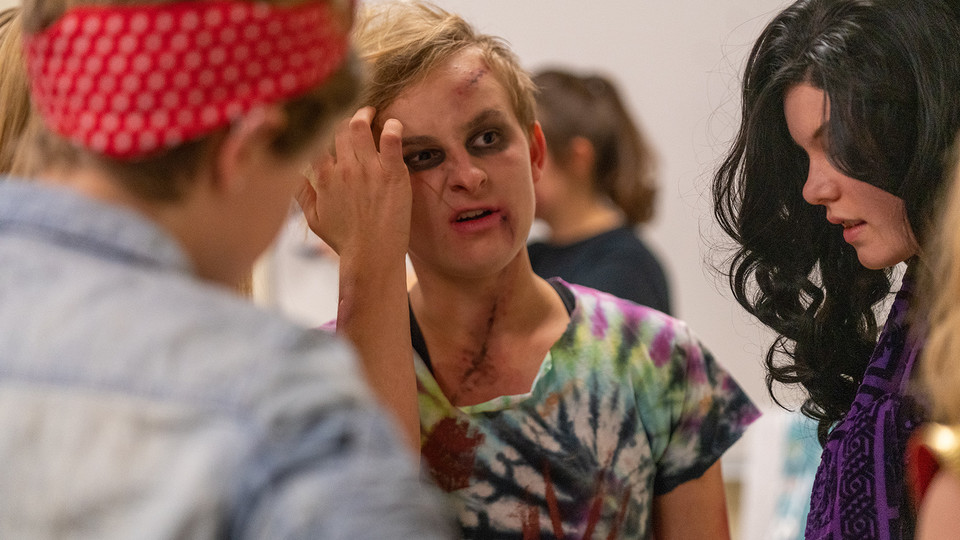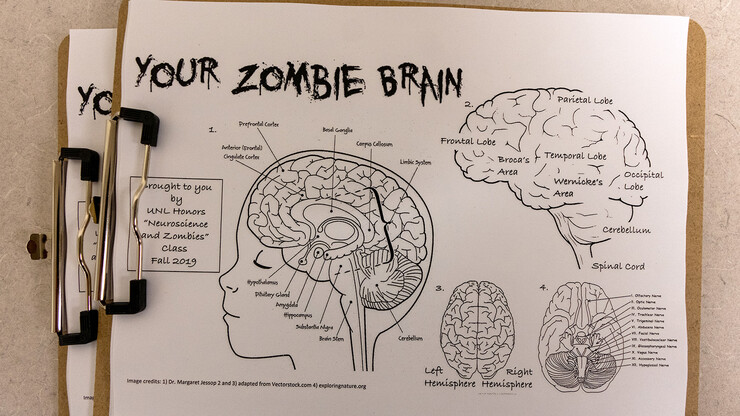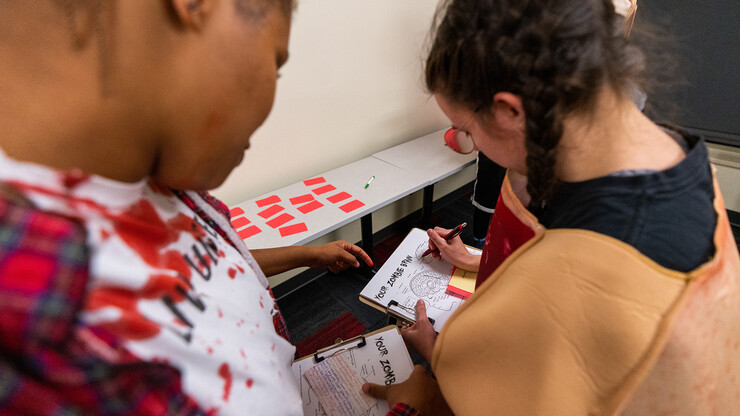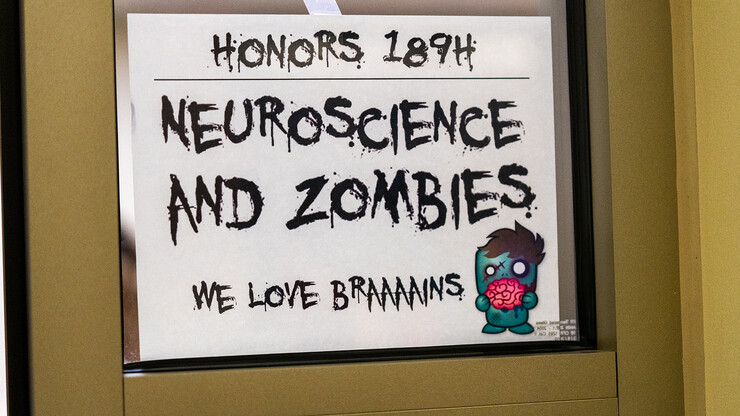· 3 min read
Honors course bites into zombie braaaains

Sluggish and tired, limbs dragging as they shuffle along, propelled by a never-ending hunger.
Zombies — which may resemble a college student after an all-night cram session on the prowl for a cup of coffee — have shuffled and crawled through countless nightmares and pop culture genres. Now, at the University of Nebraska–Lincoln, zombies’ search for brain matter is fueling lesson plans.
Through Jacquelyn Omelian’s course, “The Neuroscience of Zombies,” Huskers in the Honors Program are studying the undead. The course, taught as a 189H seminar, provides first-year honors students with the opportunity to study a specialized topic within a small classroom setting.
Omelian modeled the course after “Do Zombies Dream of Undead Sheep,” a book by Bradley Voytek and Timothy Verstynen. After reading the text a few years ago, Omelian recognized that it could be used in an engaging and interactive way to teach neuroscience. She originally crafted the zombie neuroscience unit as a one-day lecture for a course. When the opportunity arose to teach an honors seminar on the topic of her choosing, she jumped at the chance to turn zombies into a semester-long class.
The class functions as other introductory neuroscience courses, with Omelian teaching basic principles of neuroanatomy, how the nervous system functions, and how damage can affect the brain. The class then uses zombies as case models, rather than diseases like Alzheimers or Parkinson’s.
“We say, ‘So this is how this normally works, how would this work with a zombie,’” Omelian said.
Students watch clips from classic horror movies to see symptoms of the zombie’s neurological issues in action. Then, they identify where the zombies may have sustained central and peripheral nervous system damage to make them walk, talk and behave the way they are portrayed.
Lessons learned are also being spread outside of the lecture hall. Through an activity called “Learn to Walk Like a Zombie,” the honors students showed peers how a zombie would walk based on motor and language deficits. They also explained the causes of zombie-like brain damage — whether it was through parasite, virus or neurotoxin.
They also created infographic posters to display during the activity, highlighting real world viruses that cause symptoms similar to those of a zombie infection.
“It’s linking it to things in the real world,” Omelian said. “And in sort of a fun parallel.”
The “Learn to Walk like a Zombie” project was held during the Honors Halloween Bash on Oct. 29. Faculty, staff and students should also be aware that the event continues Oct. 30 and — if zombies are spotted on the Nebraska Union Plaza — there’s no need to run as the honors students are just teaching Huskers about braaaains.










